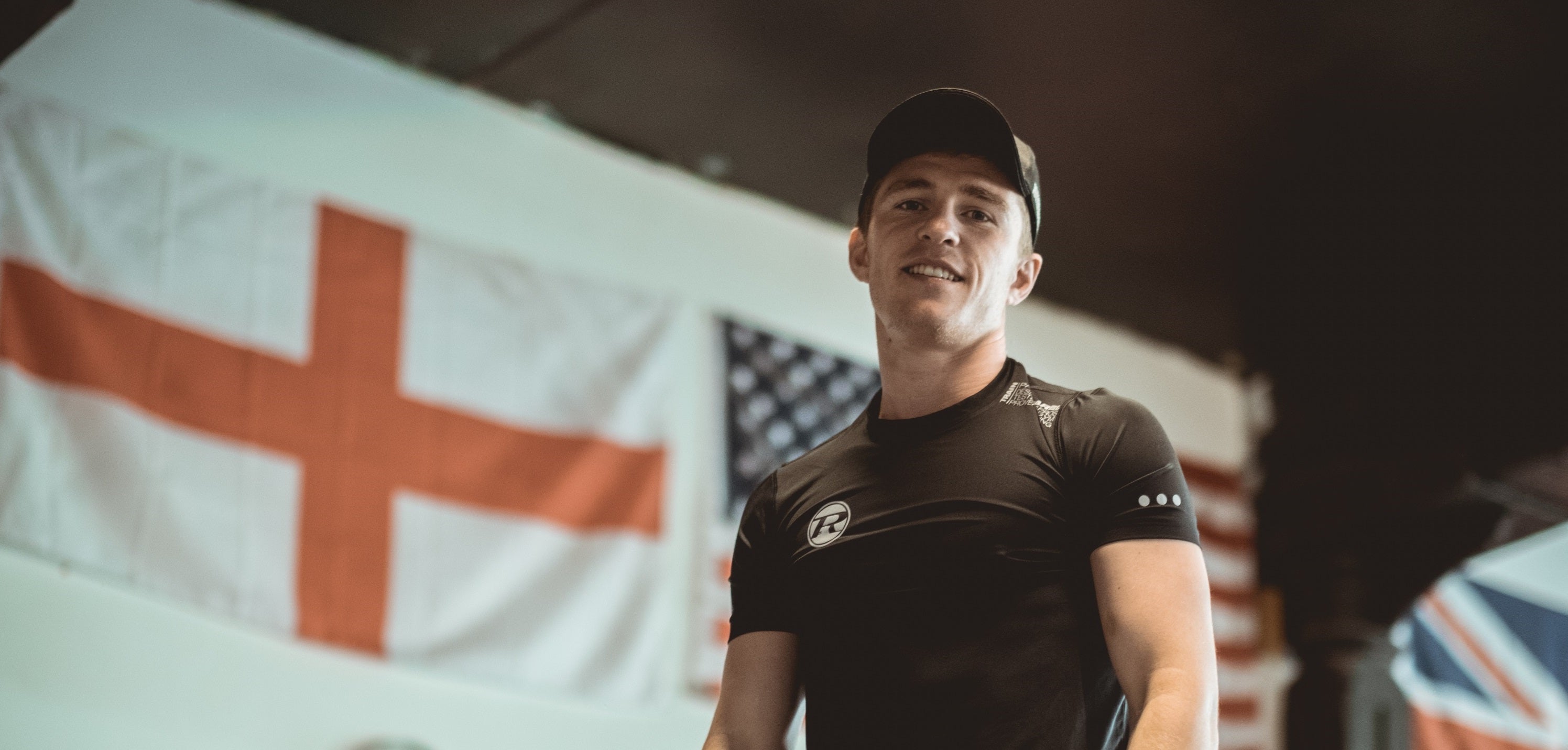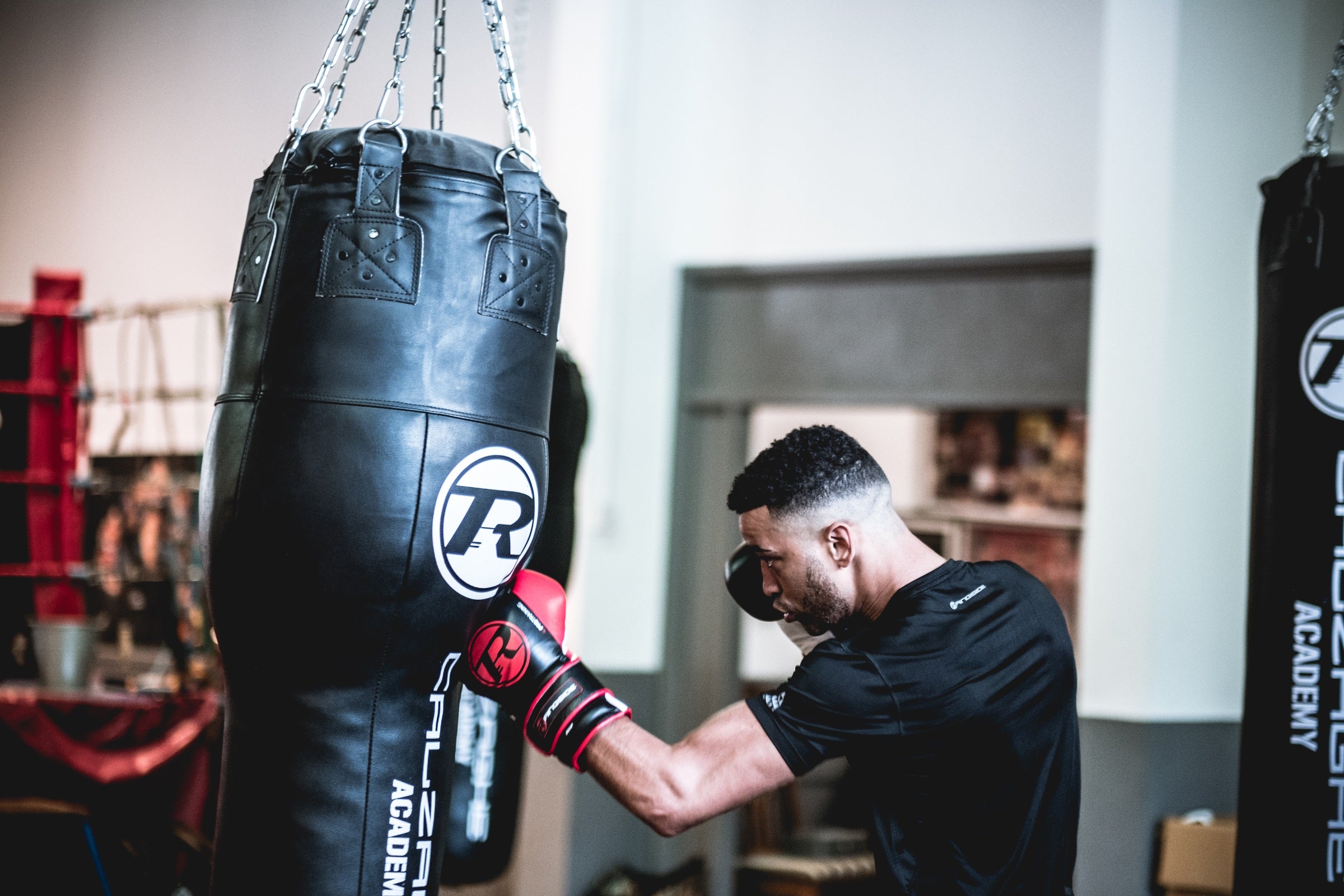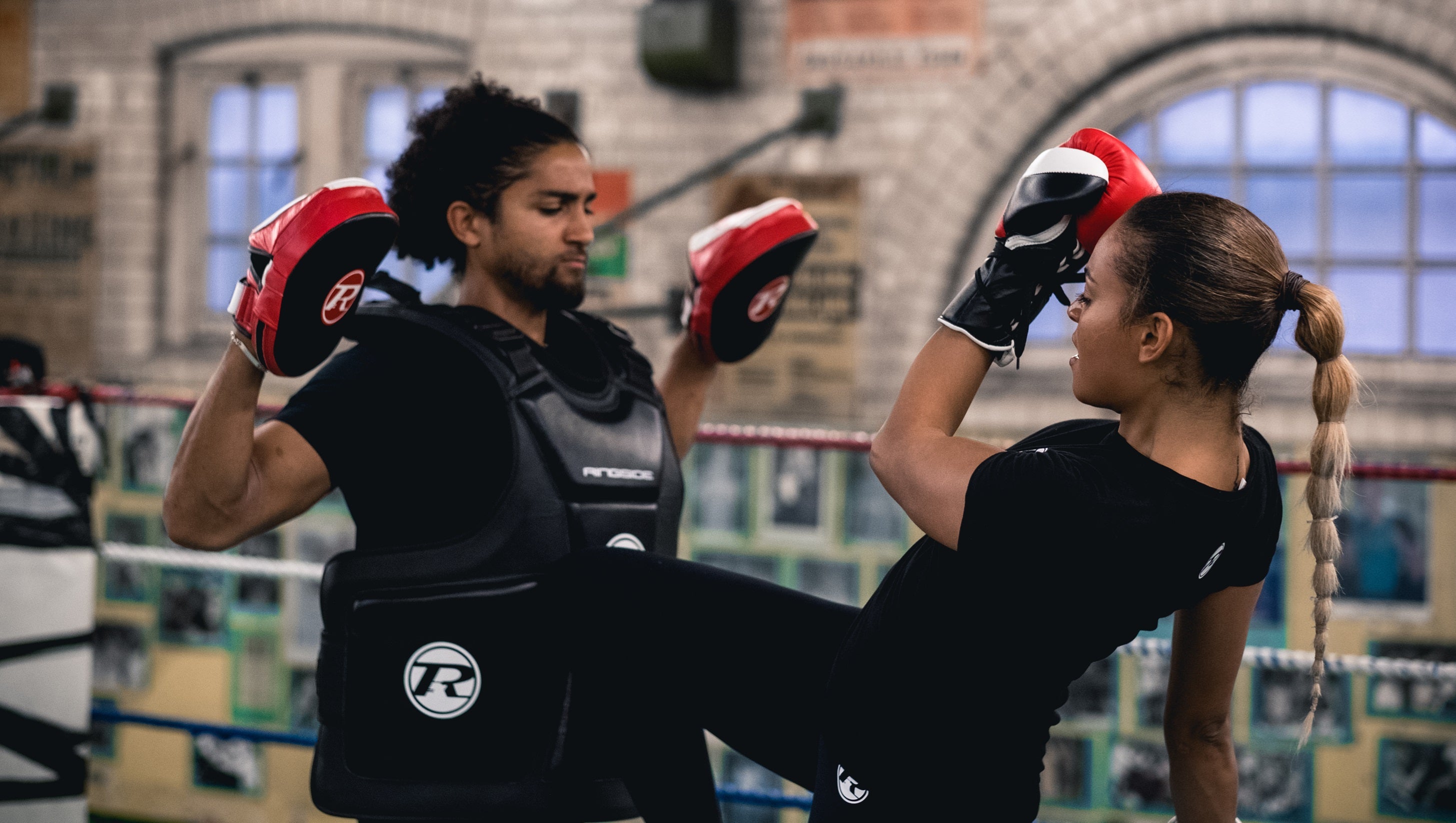
How to Choose the Right Protective Gear for Your Boxing Needs
Table of Contents
How to Choose the Right Protective Gear for Your Boxing Needs
Boxing, a sport that combines skill, discipline, and strategy, necessitates not only physical and mental resilience but also the right protective gear for the safety and efficiency of its practitioners. This guide will explore the essential components of boxing gear, highlighting how each item plays a pivotal role in protecting athletes during training and bouts. Key focus areas include gloves and headgear for safeguarding hands and heads, mouthguards for dental protection, and groin protectors for lower body safety. We will also offer insights into selecting the proper fit and material for optimal protection and comfort, essential for both novice and experienced boxers in enhancing performance while ensuring safety.
- Protective Gear in Boxing: At its core, boxing gear is designed to minimise the risk of injury. Key items include:
- Gloves: Essential for protecting the hands and wrists, gloves absorb impact and help prevent cuts and bruises to both the wearer and the opponent.
- Headgear: Used primarily in training and amateur bouts, headgear shields the head from direct blows, reducing the risk of cuts and bruises.
- Mouthguards: These protect the teeth and reduce the risk of oral injuries. They also help in mitigating the impact of blows to the jaw.
- Hand Wraps: Wrapped around the hands and wrists, these provide additional support and protection beneath the gloves.
- Groin Protectors: Essential for male boxers, these guards protect against low blows.
- Shin Guards: Used mainly in kickboxing, a variant of boxing, to protect the shins during sparring.
- Safety First: The primary function of boxing gear is to ensure the safety of the athletes. Each piece is designed to absorb or deflect impact, thereby reducing the likelihood of both short-term and long-term injuries. Understanding the protective capabilities of each item is crucial for boxers at all levels.
- Performance Enhancement: Beyond safety, the right gear can significantly enhance a boxer's performance. Well-fitted gloves can improve punch accuracy and speed, while comfortable headgear can enhance visibility and mobility. Similarly, the correct mouthguard can affect breathing efficiency, and well-designed shin guards and groin protectors can enable greater freedom of movement.
- Regulation and Compliance: It's important to note that certain types of gear are mandatory in both amateur and professional boxing. The specifications for these items are often governed by boxing organisations and sports regulatory bodies to ensure a standard level of safety and fairness in the sport.
Understanding the basics of boxing gear is the first step in ensuring a safe and effective boxing experience. Each item serves a distinct purpose, contributing to the overall protection and performance enhancement of the boxer.
Boxing Gloves – Your First Line of Defense

Boxing gloves are not just a part of the attire; they are a boxer's primary safeguard against injuries.
- Types of Boxing Gloves: Understanding the different types of gloves is crucial in selecting the right pair.
- Bag Gloves: Designed for punching bags, these gloves are lighter and have less padding. They are ideal for working on speed and technique.
- Sparring Gloves: Heavier and with more padding, these gloves are meant for sparring sessions. They protect both the user and the sparring partner.
- Competition Gloves: Used in professional matches, these gloves are lighter than sparring gloves, emphasising power and precision.
- Size and Weight Considerations: Gloves are sized not only for fit but also by weight, which is typically measured in ounces (oz). The weight of the glove affects protection and performance.
- Lighter Gloves (8-10 oz): More suitable for competition, offering less padding but greater speed and mobility.
- Heavier Gloves (14-16 oz): Recommended for training and sparring, providing more protection due to their extra padding.
- Fit and Comfort: A well-fitting glove is paramount. Gloves should be snug but not too tight, allowing some room for hand wraps. They should not restrict movement or circulation.
- Material Quality: Boxing gloves come in various materials, each affecting durability, comfort, and price.
- Leather Gloves: Tend to be more durable and comfortable but are also more expensive. Ideal for frequent training and professional use.
- Synthetic Gloves: A more affordable option, suitable for beginners or casual practitioners. However, they may wear out faster than leather gloves.
- Closure Types: Gloves come with different closures - lace-ups and Hook & Loop.
- Lace-Up Gloves: Offer a tighter and more customizable fit but require assistance to put on.
- Velcro Gloves: Easier to put on and take off, making them a convenient choice for training sessions.
- Additional Features: Some gloves come with additional features such as mesh panels for better ventilation or reinforced stitching for added durability. These features can enhance comfort and extend the lifespan of the gloves.
Choosing the right boxing gloves involves considering the type of activity (bag work, sparring, competition), the size and fit, the material quality, and personal budget. The right pair of gloves not only protects a boxer's hands but also enhances performance in the ring.
Headgear – Protecting Your Most Vital Asset
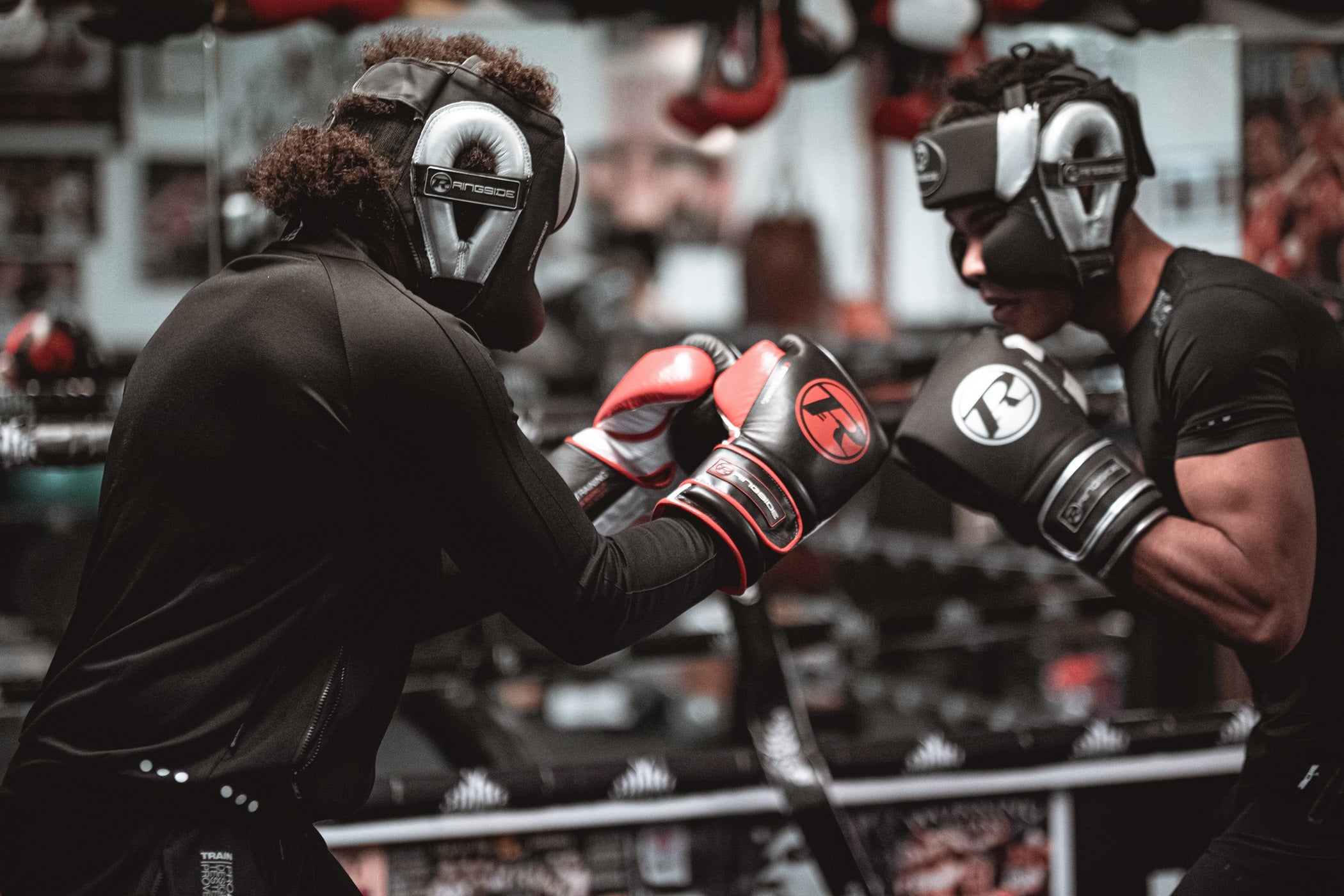
In boxing, headgear is a crucial piece of equipment that serves as a shield against head injuries.
- Importance of Headgear: Headgear is designed to protect boxers from cuts, bruises, and more serious head injuries. While it cannot completely prevent concussions, it significantly reduces the force of blows to the head, an essential factor in a sport where head impacts are common.
- Types of Headgear:
- Full-Face Headgear: Offers the most protection by covering almost the entire head and face. It includes a bar to protect the nose but can limit visibility.
- Open-Face Headgear: Provides good protection while offering better visibility. It is commonly used in amateur boxing matches.
- Cheek Protector Headgear: Features padded cheek protectors, offering a balance between visibility and protection.
- Fit and Comfort: A properly fitting headgear is vital. It should be snug to prevent it from moving during a bout but not so tight as to cause discomfort or impair vision. Adjustable straps and padding are important for a secure and comfortable fit.
- Visibility: Good headgear should not impede a boxer's vision. Visibility is crucial for seeing incoming punches and for overall awareness in the ring. Some headgear models offer wider eye openings for better peripheral vision.
- Materials and Durability: Headgear is typically made from leather or synthetic materials. Leather headgear tends to be more durable and long-lasting, while synthetic options are more affordable. The interior padding, usually foam, is also an important consideration for shock absorption.
- Weight and Size: The weight of the headgear can impact a boxer's speed and head movement. Lighter headgear allows for quicker movements, but may offer less protection. Conversely, heavier headgear provides better protection but can be more cumbersome.
- Maintenance and Hygiene: Regular cleaning and maintenance of headgear are essential, as sweat and moisture can lead to the growth of bacteria and fungi. Proper storage and occasional airing out are recommended to extend the life of the headgear.
- Regulations and Approval: For competitive boxers, it's important to choose headgear that meets the specifications and approval of boxing organisations and sports regulatory bodies.
Selecting the right headgear is a balance between protection, comfort, visibility, and compliance with regulatory standards. A good headgear not only protects the head from potential injuries but also provides the boxer with the confidence to perform at their best.
Mouthguards – Safeguarding Your Smile

Mouthguards are an essential piece of protective gear in boxing, crucial for protecting teeth and reducing the risk of oral injuries. This section covers the importance, types, and maintenance of mouthguards.
- The Necessity of Mouthguards: Mouthguards serve multiple purposes in boxing. They protect teeth from direct impacts, help prevent jaw injuries, and can even reduce the severity of concussions. A well-fitted mouthguard absorbs and disperses the force of a blow, thereby protecting the mouth and jaw.
- Types of Mouthguards:
- Boil-and-Bite Mouthguards: These are widely available and relatively inexpensive. They are boiled to soften and then bitten into to create a custom fit. While they offer a decent fit, their protection level might not be as high as custom-fitted options.
- Custom-Fitted Mouthguards: Made by dental professionals, these provide the best fit and protection. They are specifically moulded to the individual's teeth and gums, offering maximum comfort and shock absorption. They are more expensive but are a worthwhile investment for serious boxers.
- Fit and Comfort: A mouthguard should fit snugly over the teeth and gums. It should not cause gagging, impede breathing, or affect speech. Comfort is key, as an ill-fitting mouthguard can be distracting and may not provide adequate protection.
- Maintenance and Hygiene:
- Regular Cleaning: Mouthguards should be cleaned after each use with a toothbrush and toothpaste or soap and water.
- Proper Storage: They should be stored in a ventilated container to dry out between uses, preventing bacterial growth.
- Regular Replacement: Mouthguards should be replaced regularly, especially if they start to show signs of wear, to ensure maximum protection.
- Additional Considerations:
- Children and Teens: For younger boxers, it’s important to replace mouthguards more frequently to accommodate their changing dental structure.
- Braces: Boxers with braces should use specialised mouthguards designed to fit over orthodontic appliances.
- Purchasing Tips: When buying a mouthguard, look for one that is BPA-free and made from medical-grade silicone or similar materials. Always follow the manufacturer's instructions for the best fit and protection.
The right mouthguard is a small investment that can have significant benefits for a boxer's dental and overall health. Whether choosing a boil-and-bite or a custom-fitted option, ensuring a proper fit and maintaining good hygiene are key to maximising its protective qualities.
Hand Wraps and groin Protectors
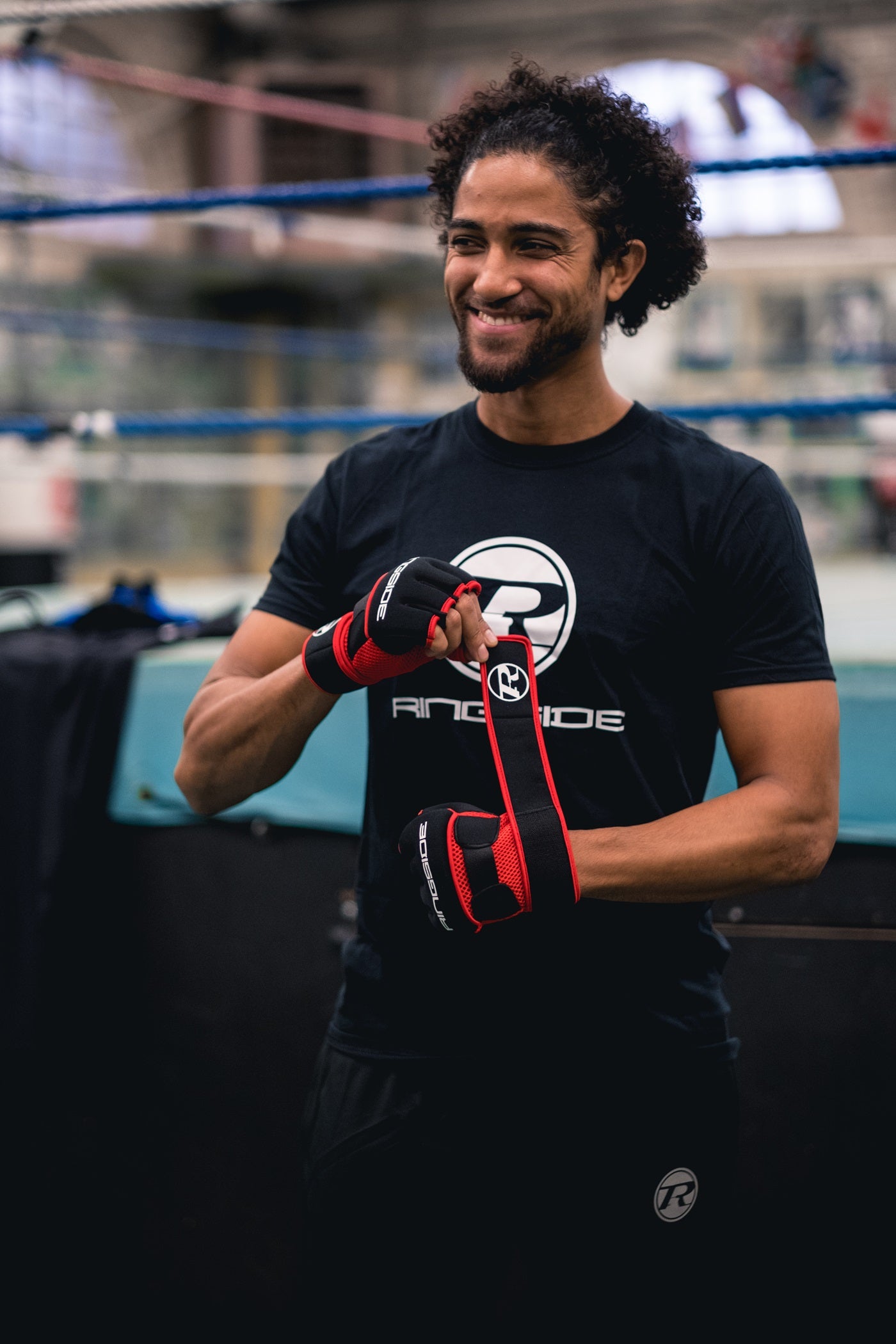
In boxing, protecting your hands and vital areas is as important as mastering the right techniques. This section focuses on hand wraps and groin protectors, two essential pieces of equipment for any boxer.
- Hand Wraps: Essential for Hand and Wrist Support
- Purpose of Hand Wraps: Hand wraps provide support to the wrists, knuckles, and the small bones in the hands. They help in absorbing shock and reducing the risk of injuries, such as fractures and sprains.
- Types of Hand Wraps: There are various types, including traditional cloth wraps, gel-padded wraps, and elasticated wraps. Cloth wraps offer a custom fit but require knowledge of proper wrapping techniques. Gel-padded and elasticated wraps are easier to put on and offer good support and comfort.
- Wrapping Techniques: Learning the correct way to wrap hands is crucial. The wrap should be snug but not too tight, as it can cut off circulation. It should cover the knuckles, wrist, and base of the thumb.
- groin Protectors: Shielding Vital Areas
- Importance of groin Protectors: In boxing, accidental low blows can occur. A groin protector shields against such impacts, protecting vital areas and reducing the risk of serious injury.
- Types of groin Protectors: They come in various designs, including traditional cup styles and more comprehensive protectors that cover the lower abdomen and hips.
- Choosing the Right Fit: A good groin protector should fit snugly without restricting movement. It should provide ample protection without being too bulky or uncomfortable.
- Materials and Comfort
- Hand Wraps: Most are made of cotton, elastic, or a blend, providing breathability and flexibility. Some come with Velcro closures for easy fastening.
- groin Protectors: These are usually made from foam padding encased in leather or synthetic materials. The inner lining should be soft to prevent chafing.
- Maintenance and Hygiene
- Hand Wraps: Should be washed regularly to prevent the buildup of sweat and bacteria. Air drying is recommended to maintain their elasticity.
-
groin Protectors: Regular cleaning is essential for hygiene. They should be air-dried fully before storage.
-
Women in Boxing
- Special Considerations: Female boxers should also invest in chest protectors, designed specifically for women, to protect the chest and ribs.
Hand wraps and groin protectors are vital for a boxer’s safety, helping to prevent injuries to the hands, wrists, and vital areas. Proper selection, usage, and maintenance of these items are key to ensuring they provide maximum protection and durability.
Additional Protective Gear
While gloves, headgear, mouthguards, hand wraps, and groin protectors constitute the core protective gear in boxing, there are additional pieces that can enhance a boxer’s safety and comfort.
- Chest Protectors:
- Purpose: Chest protectors are designed to shield the chest and ribs from direct impacts, particularly useful in sparring sessions.
- Design and Fit: They should fit snugly without restricting movement. Adjustable straps ensure a secure fit, and adequate padding provides protection while allowing for breathability.
- Gender-Specific Options: There are chest protectors specifically designed for women, offering protection that is tailored to female physiology.
- Shin Guards:
- Use in Boxing Variants: Primarily used in kickboxing or Muay Thai, which incorporate leg strikes, shin guards are vital for protecting the shins during training and sparring.
- Selection Criteria: They should offer a balance between protection and mobility, with secure fastenings to prevent slippage during movement.
- Elbow and Knee Pads:
- Purpose: In boxing disciplines that include elbow and knee strikes, these pads protect the joints and prevent injuries to both the wearer and their opponent.
- Fit and Mobility: Like shin guards, they should be secure yet allow for full range of movement.
- Ankle Supports:
- Support and Protection: Ankle supports provide additional stability and support, which can be beneficial in preventing sprains and twists, especially during intensive footwork and movement.
- Material and Comfort: Look for breathable, elastic materials that offer support without being too restrictive.
- Boxing Shoes:
- Importance for Footwork: Proper boxing shoes are crucial for footwork, offering the right balance of grip and mobility on the canvas.
- Choosing the Right Pair: They should be lightweight, provide ankle support, and have soles designed for lateral movement.
- Back and Abdominal Protectors:
- Additional Safety: For intensive training sessions, especially with body shots, these protectors can be worn to safeguard the back and abdomen.
- Considerations for Training vs. Competition:
- Training Gear: In training, the focus is on learning and safety, so additional protective gear is often used.
- Competition Gear: In competitive settings, regulations may limit the use of certain protective items, focusing on standard gear like gloves and mouthguards.
While the primary protective gear is indispensable, these additional items offer extra layers of safety and comfort, which can be especially beneficial in training. Selecting the right gear, tailored to the specific needs of the boxer and the style of boxing they practise, is crucial for both performance enhancement and injury prevention.
Care and Maintenance of Boxing Gear
Proper care and maintenance of boxing gear are essential not only for hygiene but also for ensuring the longevity and effectiveness of the equipment.
- Cleaning and Sanitizing Gloves:
- Regular Cleaning: Wipe down gloves with a damp cloth after each use to remove sweat and dirt. For a deeper clean, use a mild soap or a cleaner specifically designed for sports equipment.
- Odour Prevention: Air out gloves after use. Odour eliminators or deodorizers can be used to keep gloves smelling fresh.
- Avoiding Moisture Damage: Do not leave gloves in a bag or a damp area. Always air dry them in a well-ventilated space.
- Maintaining Headgear and Mouthguards:
- Headgear: Clean with a damp cloth and mild soap. Avoid harsh chemicals that can degrade the material. Ensure it's completely dry before storing.
- Mouthguards: Rinse after every use and occasionally clean with toothpaste or mouthwash. Store in a ventilated case.
- Caring for Hand Wraps:
- Washing Hand Wraps: Machine wash them regularly in a laundry bag to prevent tangling. Air dry to maintain elasticity; avoid using a dryer as high heat can damage the fabric.
- groin Protectors and Chest Guards:
- Cleaning: Wipe down with a damp cloth and mild soap. Ensure they are dry before storing.
- Storage: Store in a dry place to prevent mould and mildew growth.
- Looking After Additional Gear (Shin Guards, Ankle Supports, etc.):
- Regular Cleaning: Similar to gloves and protectors, these should be wiped down and aired out after each use.
- Storage: Keep in a cool, dry place away from direct sunlight to prevent material degradation.
- Inspecting Gear for Wear and Tear:
- Regularly inspect your gear for signs of wear and tear, such as cracks, tears, or significant fading. Damaged gear may not offer adequate protection and should be replaced.
- Proper Storage:
- Store gear in a cool, dry place, ideally in a breathable bag or container to prevent moisture buildup.
- Avoid storing gear in extreme temperatures, which can damage materials and reduce the lifespan of the equipment.
- Long-Term Care:
- For gear that is not used regularly, it's important to still air it out periodically and check for any issues that may arise from long-term storage, such as mould or material breakdown.
Proper care and maintenance of boxing gear are critical for ensuring its longevity, effectiveness, and hygiene. Regular cleaning, proper storage, and routine inspections for damage will help keep your gear in top condition, providing the best protection and performance for your boxing endeavours.
Conclusion: How to Choose the Right Protective
The journey through the world of boxing gear emphasises its undeniable importance in ensuring a boxer's safety, comfort, and performance. From gloves and headgear to mouthguards and protective guards, each piece of equipment plays a pivotal role in safeguarding practitioners from the inherent risks of this demanding sport. More than just tools of the trade, these items are crucial companions in every boxer's journey, whether they are stepping into the ring for the first time or preparing for a professional bout.
Choosing the right gear involves a careful balance of factors like quality, fit, brand reputation, and personal needs. While the initial focus is often on protection, factors such as comfort, durability, and regulatory compliance are equally important. Equally crucial is the care and maintenance of the gear, which not only extends its lifespan but also ensures it provides maximum protection when needed. This comprehensive approach to selecting and maintaining boxing gear not only enhances safety but also contributes to the overall boxing experience, allowing athletes to focus on their technique and performance.
As we conclude, it's important to remember that the gear alone does not make a boxer. It is the dedication to the sport, consistent training, and adherence to safety protocols that truly define one's boxing journey. With the right gear in hand and a commitment to safe practice, boxers at all levels can confidently pursue their passion, develop their skills, and enjoy the sport they love. Remember, in the world of boxing, your gear is your ally – choose it wisely, maintain it well, and it will serve you faithfully in every round.
Step into the ring with confidence and style by exploring the extensive range of top-quality protective boxing gear at Ringside Boxing.
Further Reading
- MyBoxingCoach.com: Offering a mix of free and premium instructional videos and courses, this site is a great resource for learning the fundamentals of boxing. Visit MyBoxingCoach.com.
- ExpertBoxing.com: Johnny Nguyen's site is a comprehensive resource covering a wide range of boxing-related topics. His beginner's guide and the "How to Box in 10 Days" course are particularly useful. Check out ExpertBoxing.com.
- SneakPunch.com: This site, run by former world middleweight champion Cornelius Carr, offers free resources on boxing, including blog posts and videos. Learn more at SneakPunch.com.

